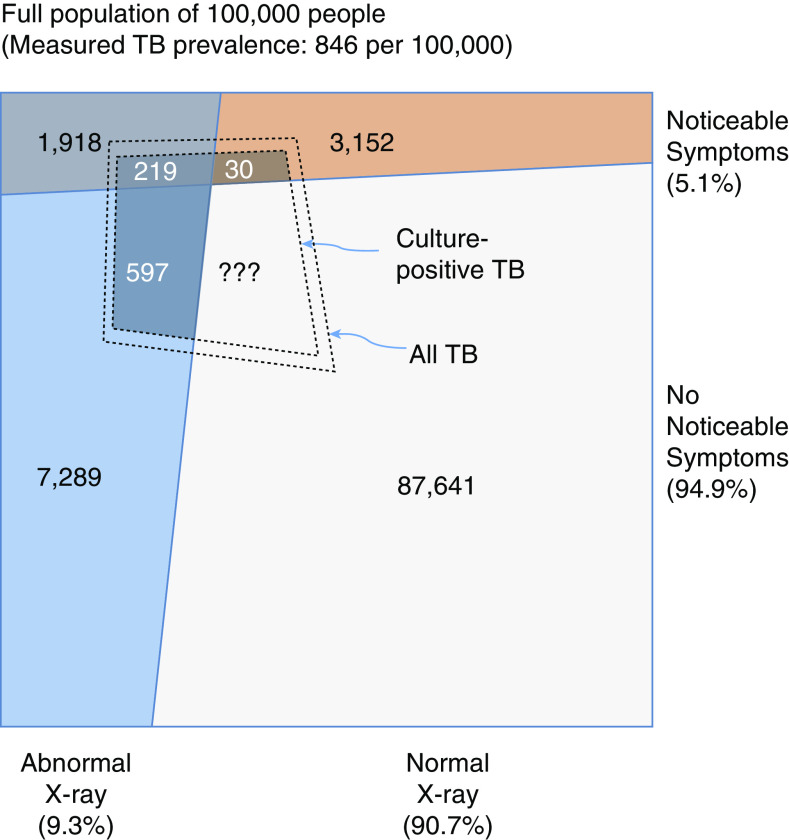Figure 2.
Relationship between symptoms, chest X-ray findings, and culture-confirmed tuberculosis (TB). The outer box represents a population of 100,000, based on the extrapolation of crude results from the 2011 Cambodia National TB Prevalence Survey (55). The inner dashed quadrilateral denotes the number of people with TB detected by sputum culture, and the dashed quadrilateral just outside it indicates all TB disease that would be identified by an optimally sensitive reference standard. In this survey—like in most TB prevalence surveys—only individuals with symptoms or abnormal chest X-ray findings submitted sputum for evaluation. Thus, the TB status of those with normal chest X-ray findings and no reported symptoms is unknown; however, it can be inferred. Specifically, the sensitivity of chest X-ray for symptomatic individuals with culture-positive TB is 219/249 = 88% in this survey. The sensitivity of chest X-ray for culture-positive TB that is asymptomatic would be expected to be lower than for symptomatic TB, but even if it were 88%, this would imply at least 597/0.88 − 597 = 81 individuals with culture-positive TB who would be missed by a combination of chest X-ray and symptom screening. After accounting for correlation between symptoms and X-ray, the likely burden of missed subclinical TB is substantially higher. In other settings and surveys, this burden of radiographically undetectable but culture-positive prevalent TB will vary, and it may be higher in settings of high HIV prevalence.

